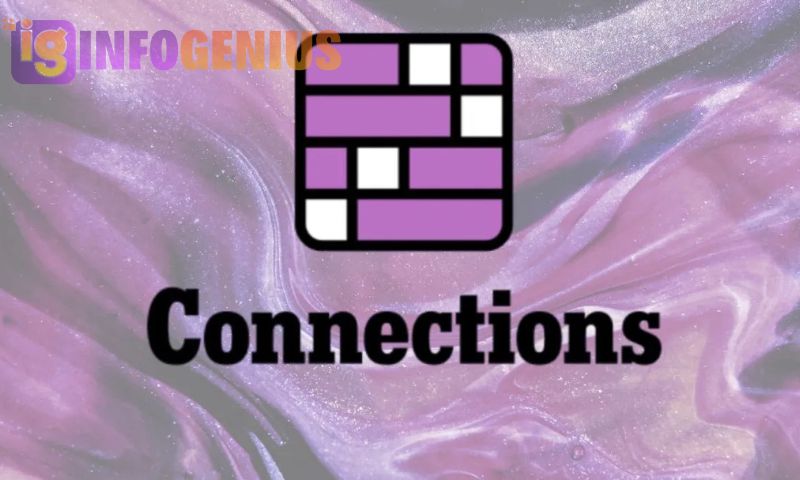The NYTimes Connections Hint puzzle has become one of the most engaging word games for puzzle lovers. Every day, players attempt to find common links between different words. The challenge lies in identifying subtle connections while avoiding misleading options. For those struggling, NYTimes Connections Hint provides guidance without giving away direct answers. This article explores strategies, tips, and how to effectively use hints to improve your game.
What is the NYTimes Connections Puzzle?
The NYTimes Connections Hint puzzle is a word association game published by The New York Times. It presents players with a grid of 16 words, and their task is to group them into four sets of four based on common themes. Unlike traditional crossword puzzles, this game requires pattern recognition rather than word definitions. Some categories may be obvious, while others require deeper thinking. Understanding how to interpret hints can significantly enhance your ability to solve the puzzle efficiently.
How to Use NYTimes Connections Hint Effectively
Many players find the NYTimes Connections Hint useful when they get stuck on a puzzle. The hints typically provide subtle clues about possible connections without revealing the complete answer. Here’s how to make the most of them:
Analyze the Word Grid – Before checking hints, try identifying words that seem related.
Look for Obvious Categories – Common themes include colors, animals, movie titles, or synonyms.
Use Process of Elimination – Remove words that don’t fit any visible category to narrow down choices.
Check the Hint for Guidance – If you’re struggling, refer to the hint for direction without skipping to the answer.
Think Outside the Box – Some connections aren’t straightforward, so consider broader meanings of words.
Common Themes in NYTimes Connections Hint
The NYTimes Connections Hint puzzle often features recurring themes. Recognizing these patterns can help solve puzzles faster. Here are some frequent themes you may encounter:
Synonyms – Words that have the same or similar meanings.
Pop Culture References – Movie titles, song names, or celebrity groups.
Geographical Connections – Countries, cities, or famous landmarks.
Numerical or Alphabetical Sequences – Words related to numbers or arranged in a specific order.
Idioms and Phrases – Common expressions or sayings.
Strategies for Mastering NYTimes Connections Puzzle
Mastering the NYTimes Connections Hint puzzle requires a combination of observation, logic, and strategy. Here are some expert tips to improve your solving skills:
1. Start with the Easiest Category
Some categories stand out immediately, such as colors or days of the week. Identifying one group first helps in solving the rest of the puzzle more efficiently.
2. Pay Attention to Word Length and Style
The NYTimes puzzle designers often use words with similar structures or themes. Looking for patterns in capitalization, pluralization, or formatting can provide clues.
3. Be Flexible in Your Thinking
Some puzzles contain tricky wordplay. For example, words that seem unrelated at first may belong to a category like homophones or puns.
4. Avoid Getting Stuck on One Idea
If a connection doesn’t seem to work, move on and come back later. Sometimes shifting focus can help new ideas emerge.
5. Use NYTimes Connections Hint Wisely
The NYTimes Connections Hint is there to guide players, not provide direct answers. Use it as a way to brainstorm rather than as a final solution.
How NYTimes Connections Hint Enhances Your Puzzle Experience
The NYTimes Connections Hint tool is designed to make the game more accessible without taking away the fun. Here’s why using hints strategically enhances your experience:
Encourages Learning – Hints help players understand word relationships better.
Reduces Frustration – Prevents players from getting stuck for too long.
Improves Problem-Solving Skills – Engages critical thinking by encouraging deeper analysis of words.
Boosts Confidence – Successfully solving a puzzle with minimal hints increases satisfaction and motivation.
How NYTimes Connections Differs from Other Word Games

The NYTimes Connections Hint puzzle stands out compared to other word games. Unlike traditional crosswords, which rely on definitions, this game requires identifying hidden relationships. Compared to Wordle, which focuses on letter patterns, Connections challenges players to see broader thematic links. The unique aspect of Connections is its ability to make players think creatively while still relying on logical deduction.
FAQs
1. How often does NYTimes Connections update?
NYTimes Connections is a daily puzzle, with new word sets and challenges available each day.
2. Can I play NYTimes Connections for free?
Some features may require a subscription, but The New York Times offers limited free access to their puzzles.
3. Are the hints provided in NYTimes Connections always useful?
Yes, but their effectiveness depends on how well you interpret them. They are designed to guide rather than give direct answers.
4. What happens if I can’t solve the puzzle?
Players can try different combinations until they find the correct ones. If stuck, hints and online resources can provide additional help.
5. Are there strategies to improve at NYTimes Connections?
Yes! Analyzing word relationships, recognizing common themes, and using hints strategically can help improve your solving skills.
Conclusion
The NYTimes Connections Hint puzzle is an engaging and challenging game that tests players’ ability to recognize word relationships. Whether you’re a beginner or an experienced solver, using hints wisely can enhance your puzzle-solving experience. By applying the strategies discussed in this article, you’ll improve your skills and enjoy the game even more. Keep practicing, stay patient, and have fun uncovering the hidden connections!






